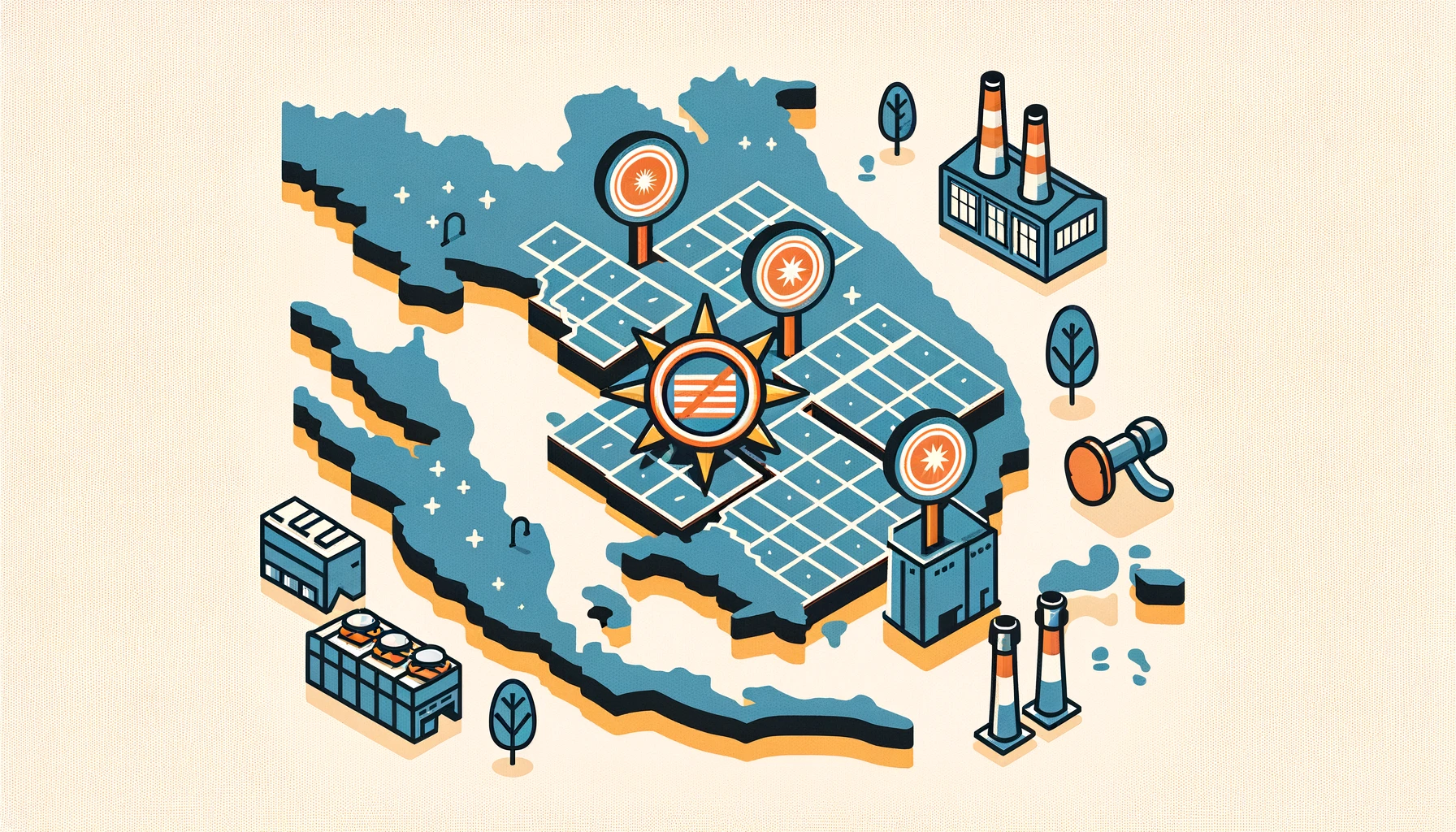
Chinese solar firms are halting production at Southeast Asian factories due to increased US trade barriers creating uncertainty for exports from the region. The latest developments reflect the growing tension in the global solar market as countries seek to protect their own industries.
Longi Green Energy Technology Co, Ltd began gradually winding down activity at a plant in Malaysia this week after halting all five production lines at a facility in Vietnam the week before, Chinese trade publication Arfcg.com reported on Tuesday (June 4), citing an unnamed source. Trina Solar Co, Ltd has suspended output at a factory in Thailand, Sina Finance reported on Wednesday, citing unidentified sources.
| Company | Location | Action Taken | Source |
|---|---|---|---|
| Longi Green Energy | Malaysia | Gradually winding down activity | Arfcg.com |
| Longi Green Energy | Vietnam | Halting all five production lines | Arfcg.com |
| Trina Solar | Thailand | Suspending output | Sina Finance |
A Longi spokesperson said the company had made “adjustments” to its production plans at several factories to combat plunging prices and trade policy changes since the beginning of the year. Trina didn’t immediately respond to an emailed request for comment.
Chinese solar companies are trying to turn a corner, even as profits evaporate due to a wave of new factories that have come online in the past year. Instead of capturing a growing market, the new supply has overwhelmed demand, prompting US and European officials to complain that China is stymieing their efforts to develop their own supply chains.
The Biden administration last month issued a suite of rules, strengthening tariffs against solar equipment. A two-year reprieve for certain solar imports from Cambodia, Malaysia, Thailand, and Vietnam will end on Thursday (June 7), and the US also plans to swiftly end an exemption on two-sided, or bifacial, solar modules.
Key Points on US Trade Policy Changes:
- Strengthening tariffs against solar equipment
- Ending two-year reprieve for certain solar imports from Southeast Asian countries
- Swiftly ending an exemption on bifacial solar modules
The four countries have been targeted in trade complaints that Chinese manufacturers set up operations there to circumvent Obama-era import tariffs on solar modules. Together, they accounted for more than 70% of US module imports last year, BloombergNEF data show.
A group of US solar manufacturers is also petitioning Washington to impose additional duties of as much as 271% on equipment imported from the four countries. The proposal caused manufacturers in the four nations to halt purchases of raw materials while they waited for more clarity, BloombergNEF said in a report last month.
The solar industry has seen significant growth in recent years, driven by the global push for renewable energy and sustainability. However, the rapid expansion of production capacity has led to a surplus of supply, putting pressure on prices and profitability for manufacturers. This oversupply has led to a challenging environment for Chinese solar firms, which are now facing additional hurdles due to changing trade policies in key markets like the US.
The Biden administration’s decision to reinforce tariffs and end exemptions is part of a broader strategy to promote domestic manufacturing and reduce reliance on foreign imports. This policy shift is intended to support the development of local supply chains and create jobs within the US solar industry. However, it has also created significant uncertainty for Chinese manufacturers operating in Southeast Asia, who must now navigate a complex and evolving trade landscape.
Challenges Faced by Chinese Solar Firms:
- Overwhelmed demand due to new supply
- Plummeting prices affecting profitability
- Trade policy changes adding uncertainty
- Pressure from US and European officials
For Longi and Trina Solar, the immediate impact has been the need to adjust production plans and scale back operations in certain locations. These adjustments are necessary to manage costs and align production with current market conditions. However, the long-term implications of these changes remain uncertain, as the global solar market continues to evolve.
As Chinese solar firms navigate these challenges, they are likely to explore a range of strategic responses to mitigate the impact of trade barriers and market pressures. This could include diversifying production locations, investing in new technologies to enhance efficiency, and seeking new markets to offset declines in traditional export destinations.
Additionally, the broader dynamics of the global solar market will continue to play a critical role in shaping the industry’s future. The push for renewable energy is expected to drive ongoing demand for solar technology, but manufacturers will need to be agile and adaptive to succeed in an increasingly competitive and regulated environment.
Future Strategies for Chinese Solar Firms:
- Diversifying production locations
- Investing in technology and efficiency
- Exploring new markets
- Adapting to competitive and regulatory environments
Overall, the current situation highlights the complexities and interconnectedness of the global solar industry. As countries implement policies to protect and develop their own industries, manufacturers must navigate a landscape marked by both opportunities and challenges. The ability to adapt and innovate will be key to sustaining growth and maintaining competitiveness in this dynamic market.
In conclusion, the halting of production at Southeast Asian factories by Chinese solar firms underscores the significant impact of increased US trade barriers on the global solar industry. As Longi and Trina Solar adjust their operations, the broader market continues to grapple with supply-demand imbalances and evolving trade policies. The future of the industry will depend on the ability of manufacturers to navigate these challenges and capitalize on emerging opportunities in the quest for renewable energy dominance.
Related News:
Featured Image courtesy of DALL-E by ChatGPT
